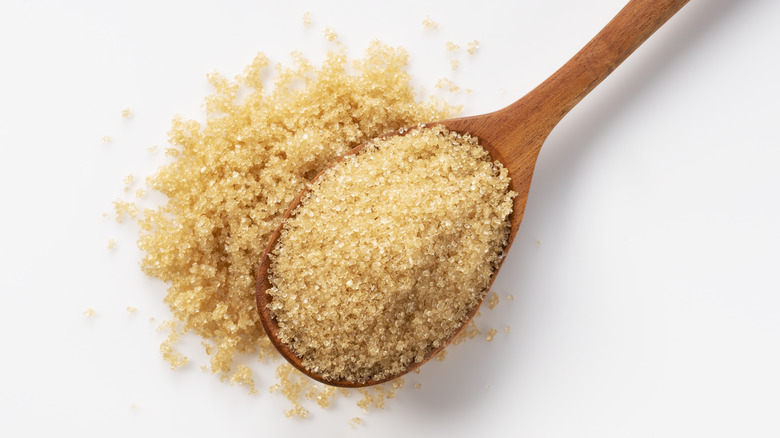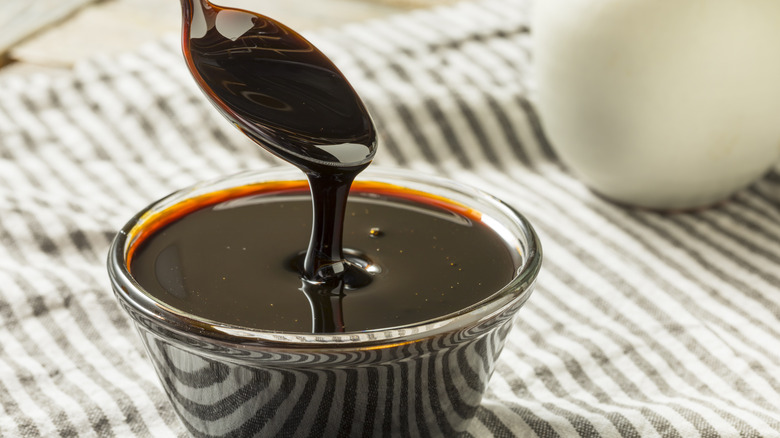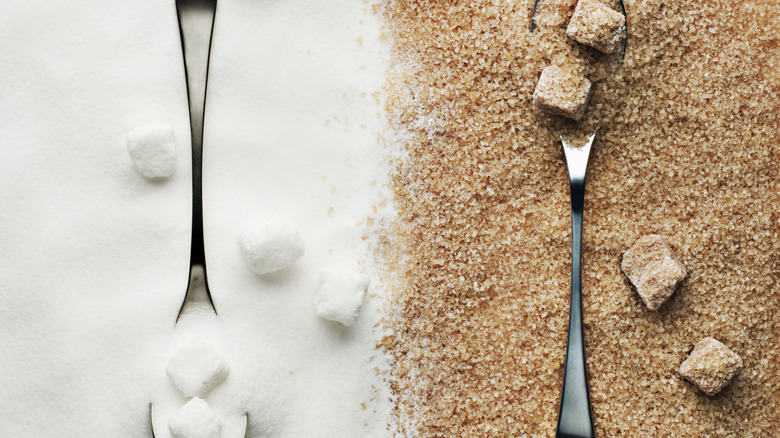The Best Substitute For Brown Sugar If You Run Out
From its color to its unique flavor and moisture content, brown sugar is much different from white sugar. Its distinct caramel taste and moist, sandy texture makes it a perfect enhancer for chocolate chip cookies and cinnamon roll recipes. People use brown sugar to make sauces and marinades and even as a rub for meats, such as pulled pork shoulder. (And that's just the food-related uses for this multitasker — brown sugar can be used in skincare products as an exfoliant in body scrubs, too.)
Countless homes have brown sugar in their pantries. But like so many ingredients, they can somehow disappear when you need them most. Before you sheepishly go next door and ask your neighbor for a cup of brown sugar, consider using a brown sugar substitute or making a homemade version. Believe it or not, brown sugar is incredibly easy to make and only requires two staple ingredients.
How to make brown sugar at home
Homemade brown sugar only requires two ingredients. Ree Drummond says that the best substitute for brown sugar is simply combining granulated sugar with molasses, which is what gives brown sugar its distinct color and flavor.
Brown sugar can come in many forms, from coarse to soft, light to dark. The main difference between light and dark brown sugar is the amount of molasses added to the sugar, with dark brown sugar containing more molasses, giving it its dark color and bold flavor. To make light brown sugar, combine 1 cup of granulated sugar and 1 tablespoon of molasses. To make dark brown sugar, you can still use 1 cup of sugar, but instead, add 2 tablespoons of molasses for a richer flavor and darker appearance.
If you're out of molasses, use the same ratio but add a different liquid sweetener, such as maple syrup, honey, or agave nectar. According to Drummond, another great brown sugar substitute is coconut sugar, which is known for its brown sugar-like taste. (Plus, it's an easy 1:1 swap for brown sugar.)
Brown sugar vs. white sugar
According to FoodInsight.org, brown sugar contains roughly the same amount of calories as white table sugar. However, brown sugar contains more vitamins and minerals, thanks to its special ingredient: molasses.
But where did brown sugar originate? EHow explains that regular cane sugar originated in southwest Asia, with the first recording of dark brown sugar being used by the Chinese. By the 12th and 13th centuries, sugar cultivation expanded to the Middle East and the Mediterranean, increasing the use of both regular and brown sugar.
By the 1700s, brown sugar rose to popularity on European sugar plantations in the Caribbean. It spread to England and the American colonies because it was cheaper than white sugar, becoming a staple in the so-called "triangle trade." From then on, brown sugar rose to popularity, with many historical recipes using brown sugar to sweeten drinks, bread, pastries, candy, and sauces.


